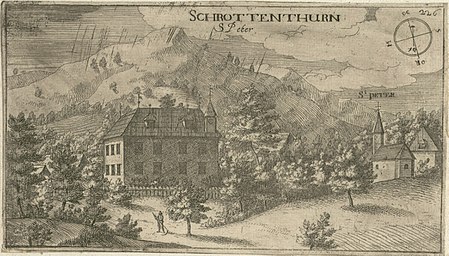Schrottenturn Manor
Buildings and structures in KranjManors in Slovenia

The Schrottenturn Manor (Slovene: Šrotenturn, Grad Schrottenturn) is a manor in Stražišče, a neighborhood of the town of Kranj in northwestern Slovenia. It was built or owned in the 16th century by the Schrott family. In 1902, it was bought by the politician Oto von Detela and became known as the Detela Manor (Slovene: Detelova graščina). Since World War II, it has been used as a residential building.
Excerpt from the Wikipedia article Schrottenturn Manor (License: CC BY-SA 3.0, Authors, Images).Schrottenturn Manor
Pot na Jošta, Kranj Stražišče
Geographical coordinates (GPS) Address External links Nearby Places Show on map
Geographical coordinates (GPS)
| Latitude | Longitude |
|---|---|
| N 46.235408333333 ° | E 14.339261111111 ° |
Address
Šrotenturn
Pot na Jošta 41
4000 Kranj, Stražišče
Slovenia
Open on Google Maps











